It's tater weather. As summer yields to the first inklings of fall water is boiled, potatoes are peeled and cubed and a mashed, starchy treat appears next to sliced meat. I take my mashed taters with plenty of butter and salt and fresh ground pepper. I won't refuse a dab of sour cream but one runs the danger of making a damn fine thing too good, too rich.
As the evenings cool I also begin to think about the small streams that I've let lie fallow since spring. While many of these little gems run relatively cool through the summer months it just doesn't seem right to fish them when so many other factors are stacked against them. As the weather turns wetter and cool evenings keep water temperatures moderate I don't feel so bad luring a trout to take a swipe at a well placed Parachute Adams. So I give it a go with low expectations of success.
In the thin water of late summer the trout are especially spooky. I usually wear waders not for their watertight qualities but to add extra protection as I stalk through thickets of poison ivy and tick grass to kneel and cast from muddy banks. I usually see far more trout than I catch but there's some satisfaction in knowing that you're fishing over water that holds trout instead of casting blindly, spooking everything, and seeing nothing.
Most of the catch will be brown trout with the occasional rainbow though these waters haven't been stocked in recent memory. These are likely remnant populations from a long ago stocking or intrepid travelers who have come up or down from stocked waters. I suppose some might be the work of bucket biologists but fish have been stocked in Connecticut since the 19th century, so there has been plenty of opportunity for all manner of invasives to take root.
I don't know what it is about wild trout that makes them so appreciated. I think it is the impossibility of it all. Centuries of habitat neglect should have crushed any hope of trout spawning in suburbia but they do. As Jeff Goldblum said, "Life, uh, finds a way." As with cinematic dinosaurs so it goes with trout.
In the 18th century native brookies would have been thick in these waters but these canaries in the coal mine struggle to keep station in habitat they can barely tolerate. While our direct impact has threatened and exterminated local populations of brookies, it is our indirect actions that likely hold the longer term threat. As climate changes and we find ourselves enjoying relatively warmer weather, the native range of this fish will shift out of my neighborhood. Maybe it already has.
In the fall brook trout are a bonus not only because of their relative rarity but because of their fine fall spawning colors. You know immediately when you've hooked a fall brookie; the flash of a brilliant orange belly is a dead giveaway. Yeah, I like those browns whose bellies are the color of melted butter in a frying pan waiting for a dollop of pancake batter but spawning brook trout are just spectacular. Worth waiting for just as much as the crimson sugar maples that color the bank. If folks only knew how spectacular they were perhaps there'd be trout peepers making journeys to streams. It's probably good that there isn't such a thing.
It has been an abundant water year and the summer was mild. The fishing will be good this fall and I've got a good tip on a reliable brook trout stream. It's a bit of a drive but the prospect of landing many of these colorful fish has some appeal. Of course, one doesn't want to be a glutton. Perhaps I should stick with just a dollop of brook trout and stay closer to home.
Steve Zakur consumes Idaho potatoes in western Connecticut. He also writes at sippingemergers.com and for various magazines when he's not appreciating boiled tubers.





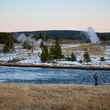




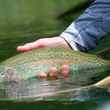




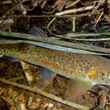



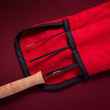
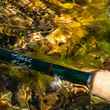



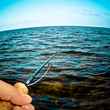
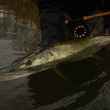



Comments